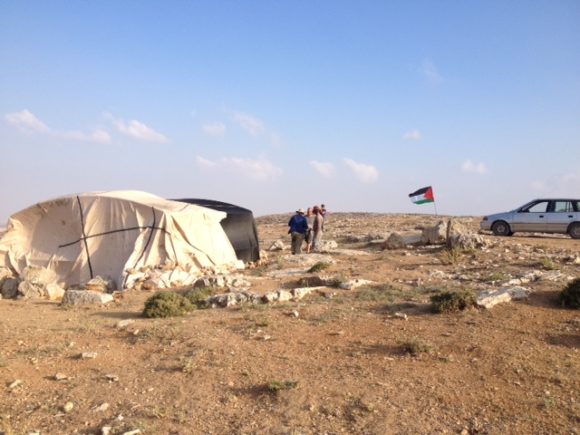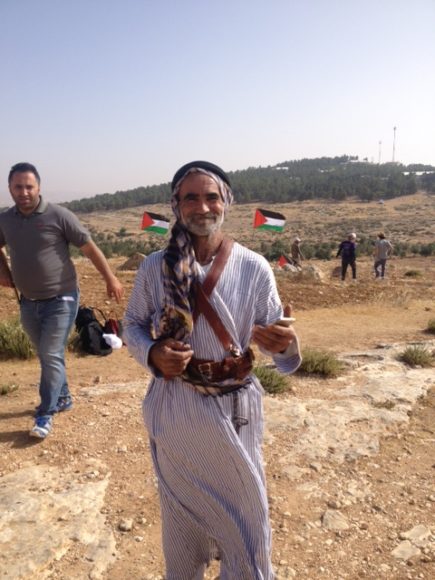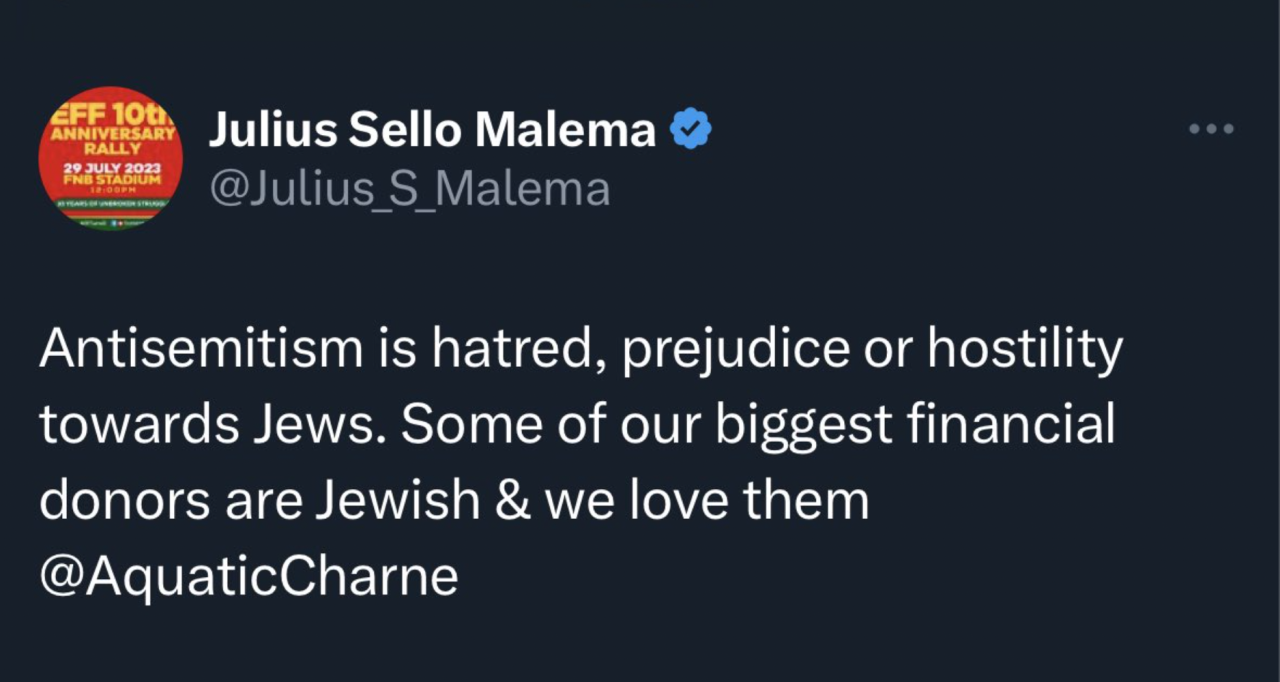Eight days ago, I woke up with 130 other American and international Jews on a rooftop in the South Hebron Hills and in order to avoid being stopped at checkpoints, hiked into the village of Sarura to take part in an unprecedented number of Jews from abroad who are participating in a Palestinian-led coalition seeking to return families forcibly evicted from that village in the 1990s, and to launch a resistance camp, modeled on Standing Rock, to test the power of nonviolence to reverse the systematic displacement of occupation in the West Bank.
All together we were 300 Palestinian, Israeli, Jewish and international activists organized by a historic coalition of members of the Popular Committees of the South Hebron Hills, Youth Against Settlements, Holy Land Trust, Combatants for Peace, All That’s Left: Anti-Occupation Collective, and the Center for Jewish Nonviolence. Within sight and earshot of the illegal, hilltop settlement of Ma’on, we worked to reclaim the lands of the Fadal Amar and his family, who returned with us to their home for the first time in 20 years. We cleared rocks, worked to rehabilitate their wells (poisoned by settlers), flattened the roads, and supported their move home in every way. Issa Amro, of Youth Against Settlements, kept us working at a fast pace, bargaining that with Shabbat beginning, we might have 25 hours to create “our own facts on the ground,” before being evicted by the military, border police, or settlers. To Amro’s surprise, despite circling settlers and a drone, we had about 36 hours to restore the Amar family dwellings and build up the structures and the spirit of what we named Sumud (“steadfastness”) Freedom Camp.

The Sumud Freedom Camp. (Photo: Jodi Melamed)

Tents and villagers at the Sumud Freedom Camp. (Photo: Jodi Melamed)

Fadal Amar returns to his land in the South Hebron Hills for the first time in 20 years. Amar’s land was confiscated by the Israeli military in the 1990s. (Photo: Jodi Melamed)
Around 11 p.m. on the second day, an irregular and illegal military brigade invaded the camp. Without showing orders, which they did not have, they choked and pushed us, singled out Palestinians for brutal treatment, stole our generator, ripped down our camp, brought the tents down on the people sleeping inside them, and threatened us with semi-automatic machine guns and pepper spray. But our Palestinian, Israeli, and international Jewish group remained steadfastly nonviolent. We sang songs, locked arms, defended each other, pushed forward against police lines to reunite our groups, and went eye-to-eye with masked soldiers without aggression. The military confiscated everything or left it in shambles, but no one was detained, and in the morning, we started to rebuild a tighter encampment closer to the Amar cave home. (Mondoweiss posted video of rebuilding after the raid here)
The night before last, after an unprecedented seven days of holding ground, the border police and civil administration returned to raid Sarura again. They beat Fadal Amar, were aggressive towards activists, and ripped down all but one shade structure. Having expelled villagers years ago by claiming the location as a military training zone (Firing Zone of 918), the civil administration (COGAT) used the alibi of past state violence to justify present military violence, laughably claiming to have come to remove activists for their own protection. Yet after four hours of nonviolent resistance, a high-level military commander entered the scene and made an agreement with not to confiscate the materials the border police had dismantled and to leave Sarura for the time being. In the words of Tariq, an activist from Umm al-Khair, “For me as a Palestinian living in the South Hebron Hills, this is the first time I see nonviolent people keeping nonviolent resistance, and I saw the tents [returned] back to the people because we are nonviolent…We [have] made a great victory.”

Israeli soldiers raid the Sumud camp. (Photo: Jodi Melamed)
Is nonviolent direction action in this instance normalizing? The thought circulated among some. Yet, on the ground, Bedouin youth standing up to the military and settlers, which gave their relatives more hours on the lands where they grew up doesn’t feel normalizing.
As I’m making my way back to the U.S. and the presence of American and international Jews at Sumud Freedom Camp shrinks, I’m left with a bitter taste in remembering Fadal, and others interested in replicating what we were doing to return to their homes in nearby villages, saying that without the presence of American Jews in such large numbers, his family could not return; that American Jewish presence in Sarura protects them. Palestinians in Sarura are risking calamity to their bodies and their capacity to live in the present in the hope this particular nonviolent direct action might spark something that makes liberation more possible in the future. Thus far, the news media has reported only the destruction of the camp; the launch of a Palestinian-led nonviolent resistance movement to reclaim villages in the South Hebron Hills is not the story. The demand remains: to allow the villagers of Sarura to live on their land, rebuild their homes and wells and live in peace, free from occupation. What will it take to make it seem possible to believe that the occupation can be taken down through nonviolence?
Source Article from http://mondoweiss.net/2017/05/testing-nonviolence-freedom/
Related posts:
Views: 0
 RSS Feed
RSS Feed

















 May 27th, 2017
May 27th, 2017  Awake Goy
Awake Goy 


 Posted in
Posted in  Tags:
Tags: 
















